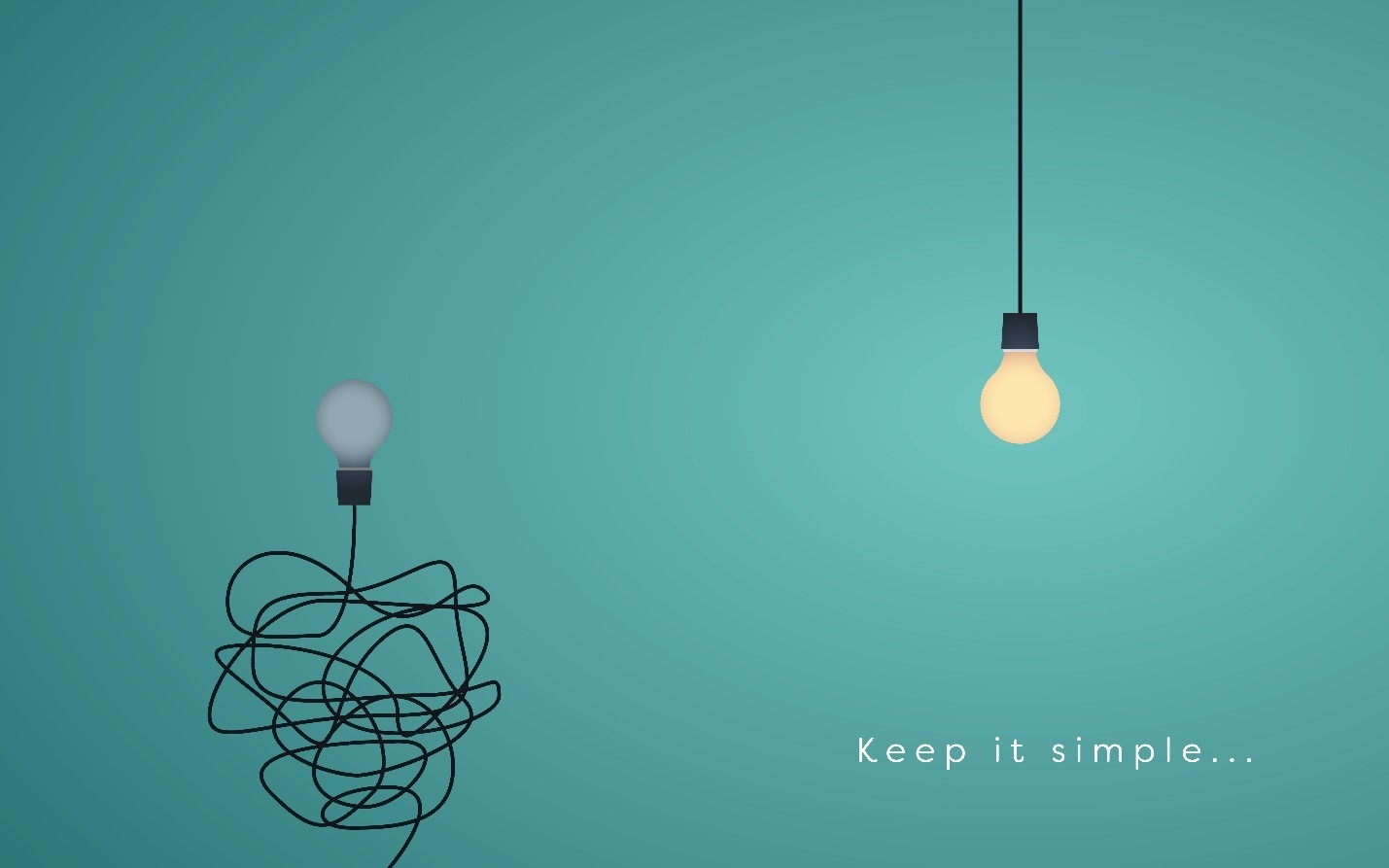The Simplicity Principle: A Path to Better Communications
As communicators we understand the importance of simplicity – messages that are easy to understand, the essence of a brand, or an elevator pitch to summarize a client or agency story.

Although keeping things simple makes deep intuitive sense, it’s surprisingly hard. Even the smartest companies and communicators often struggle to find it because it is obscured by the complexity of our minds and the world in which we live.
Acknowledging that simplicity is difficult makes us better communicators because we recognize it takes work and skills that must be honed to find it.
But this is not enough.
“Without knowledge action is useless and knowledge without action is futile,” said 7th century leader, Abu Bakr.
A Deeper Understanding of Simplicity
A deeper understanding of simplicity, and what gets in the way, are keys to building a stronger foundation for thinking about, pursuing, and even recognizing it.
As a starting point, it’s important to put into context just how much information we have to process at any given moment.
Think about the camera on your cell phone and the memory it takes to capture a single image. If you have a standard phone camera, you’ll need around 8 megabytes of memory. Recording a high-quality video for two or three minutes will require closer to one gigabyte of memory and computer power that not long ago, slowed laptops to a crawl.
Complexity Makes our Brains Hurt

As we look out on the world, our brains must make sense of not only images, but sounds, add meaning and context. This is a huge feat of mental processing. And, as we know from experience, TMI (too much information) can slow us down just like a computer, and even make our brains hurt! We’ve all been there.
It should be no surprise that when we process the world around us, we use techniques to make it easier to digest. Research, and experience, show that our brains reduce the world into easy-to-understand patterns.
The Simplicity of Language

From a communications perspective, the most important way in which we simplify the world is through language. Take the word “tree”. Every tree is different. There are thousands of types of trees and each of these has a different number and color of leaves. And, as living entities, they are always changing based on seasons and stage of life. Imagine the challenge of explaining a tree to someone if we could not reduce the concept into a simple word.
And, add to this, our audiences are as equally overloaded with information. Who is going to have patience or capacity to hear the details of a specific tree?
Reducing Complex Ideas to Their Essence
To communicate we need to reduce complex ideas to their essence, so they can both be shared and received.
How do we know if a communication is as simple as it needs to be?

It’s not obvious. We need to navigate through the obstacles of ego and the effort required to achieve the clarity we desire.
For example, when we like what we have written, ego may well prevent us from changing text or accepting edits from others. And, if we consider all the possible permutations of word choice and meaning, the work required to find the simplest writing may feel overwhelming, leading us to compromise, take shortcuts, or give up. There’s no doubt that when we wrestle with language, we don’t always win.
Communications, Resonance and Dissonance
We need to recognize and tap into biofeedback mechanisms – the feeling that something is getting in the way of understanding or that our brains are heating up or slowing down because of the work required to understand what is being shared.
Deepak Chopra talks about the idea of resonance – that when something feels right it will resonate on a deep human level. We need to pay attention when we communicate to both what resonates, something that communicates clearly and fundamentally, as well as dissonance, a feeling we get when an idea does not compute.

If this sounds hokey or too new age, frame it in whatever way will work for you. But bring to mind the different feelings you have when you’ve written something good or received a well-written communication. Then think about your response when the opposite is true. That’s what we need to tune into to be better communicators.
By taking the time to understand the way our brains work to process information, the noise and complexity that get in the way of the simplicity essential to communications, and the biofeedback mechanisms for evaluating where we are on the path to it, we have new lenses to view our work. And, most importantly, opportunities to improve it.
By decoding how we process information, we’ll be better at coding it in ways that drive desired outcomes.
Simon Erskine Locke, Founder & CEO of CommunicationsMatchTM
CommunicationsMatch offers communications & PR agency search tools and resources that help companies find, shortlist, and engage communications, digital marketing and branding agencies, consultants and freelancers by industry and communications expertise, location and size. The site has 5,000 agency and professional profiles in areas including: crisis communications, public relations, internal communications, government affairs, investor relations, content marketing, social media, SEO, website development, photography and video. Prior to founding CommunicationsMatch, Locke held senior corporate communications roles at Prudential Financial, Morgan Stanley, and Deutsche Bank and founded communications consultancies.
